How to Grow Lettuce
- February 14, 2024
- 0 comment
Lettuce, a popular leafy green, is a staple in salads and sandwiches. Growing lettuce at home is rewarding, as it is both easy to cultivate and offers fresh, organic produce right from your backyard or balcony. This guide will walk you through the steps to grow and care for lettuce, ensuring a bountiful harvest.
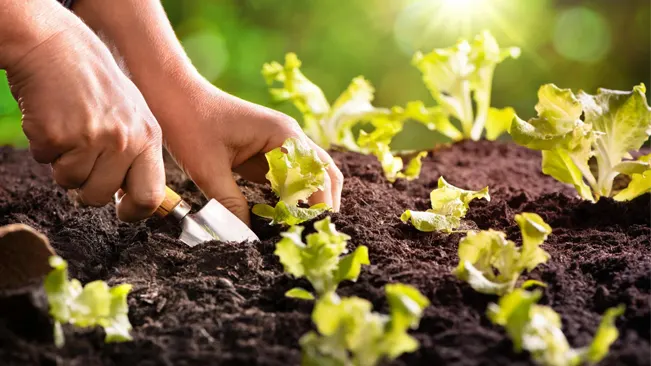
Choosing Your Lettuce Variety
Lettuce comes in various types, each with unique flavors, textures, and growth requirements. Common varieties include Romaine, Butterhead, Iceberg, and Leaf lettuce. Research and select a variety that suits your climate and taste preferences.
- Iceberg Lettuce: Known for its crisp texture and mild flavor, Iceberg lettuce forms a dense, cabbage-like head. It’s a popular choice for salads and sandwiches.
- Romaine Lettuce (Cos): This variety has long, dark green leaves with a firm rib down the center. Romaine lettuce is known for its crunchy texture and slightly bitter taste, making it ideal for Caesar salads
- Butterhead Lettuce (Boston and Bibb): Butterhead lettuces have soft, tender leaves and form a loose head. They have a sweet, mild flavor and a delicate texture. Boston and Bibb are popular sub-varieties, with Bibb being the smaller of the two.
- Leaf Lettuce (Red Leaf and Green Leaf): Leaf lettuce, as the name suggests, does not form a head but instead has loose leaves. It comes in green and red varieties and has a mild flavor and tender texture. They are perfect for adding color and volume to salads.
- Oak Leaf Lettuce: This type has a distinct oak leaf shape and comes in green and red varieties. It has a mild flavor and tender, delicate leaves.
- Lollo Rosso: Known for its frilly red leaves and a slightly bitter taste, Lollo Rosso is a type of leaf lettuce that adds color and texture to salads.
- Batavia Lettuce (Summer Crisp): This variety forms loose heads with crispy leaves and is known for its tolerance to heat. It comes in both green and red varieties and has a sweet, mild flavor.
- Little Gem: A small, compact variety of Romaine, Little Gem has sweet, crunchy leaves. It is ideal for small gardens or container gardening.
- Mache (Corn Salad or Lamb’s Lettuce): Not a true lettuce but often used similarly, Mache has small, tender, nutty-flavored leaves. It’s excellent for salads and grows well in cooler climates.
- Arugula (Rocket): Again, not a true lettuce but commonly used in lettuce mixes for its peppery flavor. It has small, lobed leaves and adds a spicy kick to salads.
Preparing the Soil
Lettuce thrives in loose, well-draining soil rich in organic matter. Prepare your garden bed or container by mixing in compost or aged manure to enrich the soil. Ensure a pH level between 6.0 and 7.0 for optimal growth.
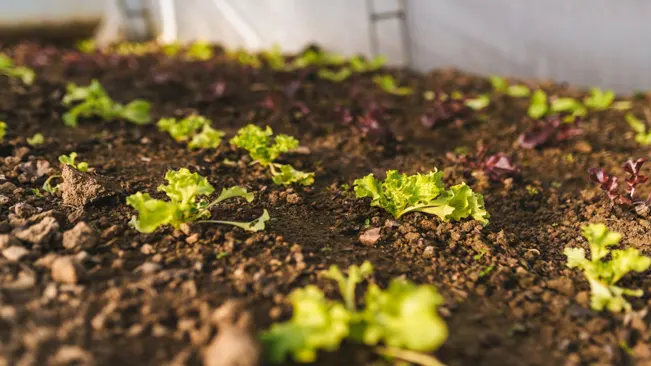
Understanding Soil Composition
- Texture: Lettuce prefers soil that is loose and well-draining. This means the soil should be light enough to allow for good root growth and water drainage, yet retain enough moisture to keep the roots hydrated. A sandy loam soil is ideal.
- Organic Matter: Adding organic matter is key to soil preparation. Organic matter improves soil structure, drainage, and nutrient content. It includes:
- Compost: Rich in nutrients, compost is decomposed organic material. It improves soil structure, provides a wide range of nutrients, and enhances microbial activity in the soil.
- Aged Manure: Aged or well-composted manure is another excellent source of nutrients. It should be aged or composted to avoid burning the plants with excess nitrogen and to kill any potential pathogens.
Steps for Preparing the Soil
- Testing the Soil: Begin by testing the soil’s pH level. Lettuce grows best in a slightly acidic to neutral pH, between 6.0 and 7.0. You can buy a soil pH testing kit from a garden center or online.
- Clearing the Area: Remove any weeds, rocks, or debris from the area where you plan to plant lettuce. This helps prevent competition and soil pests.
- Tilling the Soil: Use a garden fork or tiller to loosen the soil to a depth of about 8-12 inches. This aerates the soil and makes it easier for lettuce roots to penetrate.
- Adding Organic Matter: Mix in a 2-3 inch layer of compost or aged manure into the top 6-8 inches of soil. This process enriches the soil with nutrients and improves its structure.
- Balancing pH: If your soil is too acidic (pH below 6.0), you can add lime to raise the pH. If it’s too alkaline (pH above 7.0), you can add sulfur to lower the pH. Follow the instructions on the product for the correct application rates.
- Final Preparation: Rake the soil surface to make it level and break up any large clumps. This creates a smooth bed for sowing seeds or transplanting lettuce seedlings.
- Watering: After preparing the bed, water the soil thoroughly. This settles the soil and ensures it’s adequately moist for planting.”
Sowing the Seeds
You can start lettuce seeds indoors or directly sow them in your garden. Plant the seeds ¼ inch deep and about 1 inch apart. If planting rows, keep them about 12 to 18 inches apart. Lettuce seeds typically germinate in 7 to 10 days.
Starting Indoors
Timing
Start seeds indoors about 4-6 weeks before the last expected frost. Lettuce can handle a little cold, but it’s sensitive to frost.
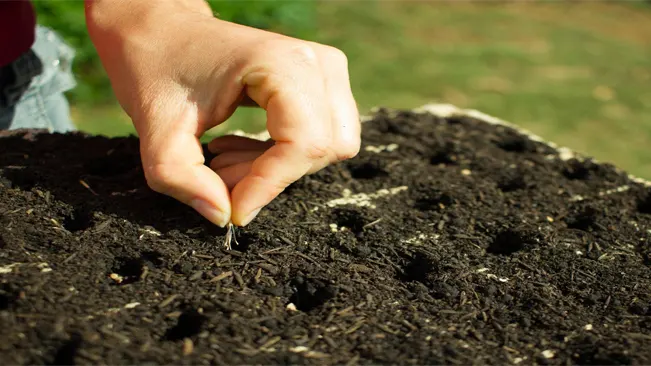
Seed Trays or Containers
Use shallow trays or small pots filled with a good quality, seed-starting mix. This mix is typically finer and lighter than regular potting soil, which helps with seed germination.
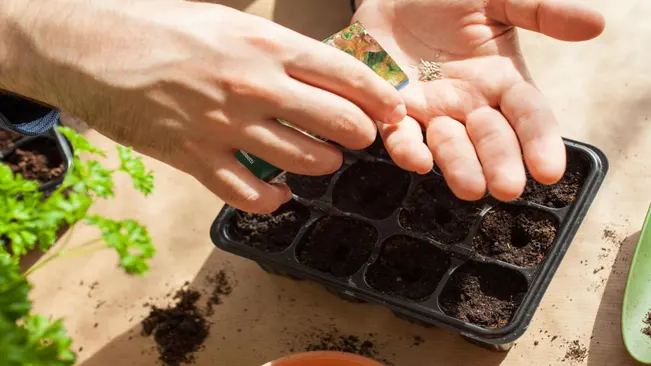
Planting the Seeds
Sow the seeds by sprinkling them lightly on the surface of the soil. Then, cover them with a very thin layer of soil—about ¼ inch deep. Lettuce seeds need some light to germinate, so don’t bury them too deeply.
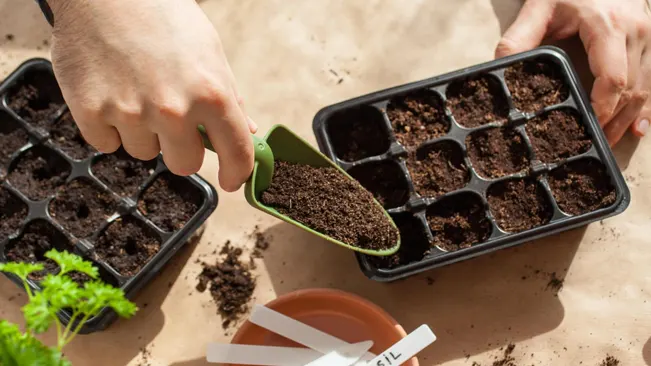
- Moisture
Keep the soil moist but not waterlogged. Using a spray bottle to mist the soil can prevent overwatering. - Temperature
Lettuce seeds prefer a cooler environment to germinate. A temperature around 60-68°F (15-20°C) is ideal.
- Light
Once the seeds have been sown, place the trays in a well-lit area or under grow lights. Lettuce needs plenty of light to grow strong and healthy.
Transplanting
Once seedlings have several true leaves and are strong enough to handle, transplant them to your garden or a larger container. Harden them off by gradually exposing them to outdoor conditions over a week.
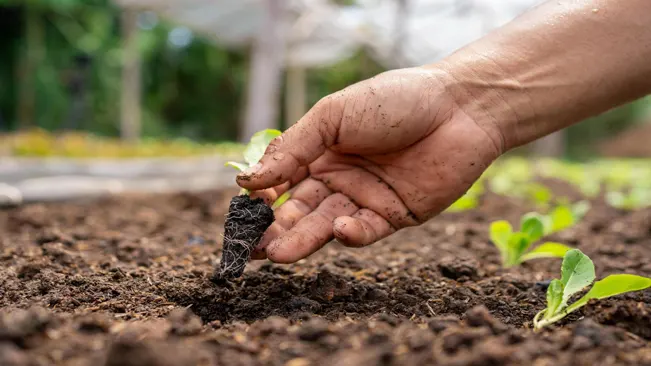
Direct Sowing
Timing
You can directly sow lettuce seeds in your garden as soon as the soil can be worked in the spring. For a continuous harvest, sow seeds every 2-3 weeks.

Soil Preparation
Prepare the garden bed by loosening the soil and adding compost or aged manure to enrich it.
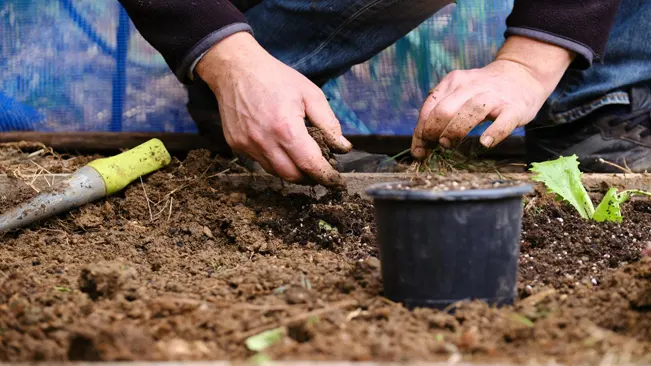
Sowing
Plant the seeds ¼ inch deep and about 1 inch apart. If you’re planting multiple rows, space them about 12-18 inches apart.

Watering
Water gently and keep the soil consistently moist until germination. Seedlings can dry out quickly, so regular watering is crucial.
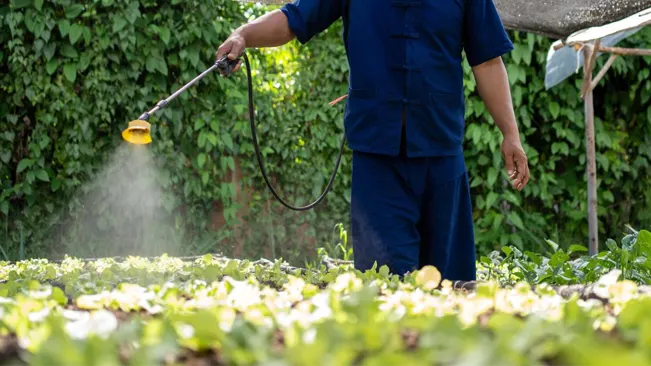
Thinning
Once seedlings are a few inches tall, thin them so they are spaced about 6-8 inches apart. This spacing gives them room to grow and ensures adequate air circulation.
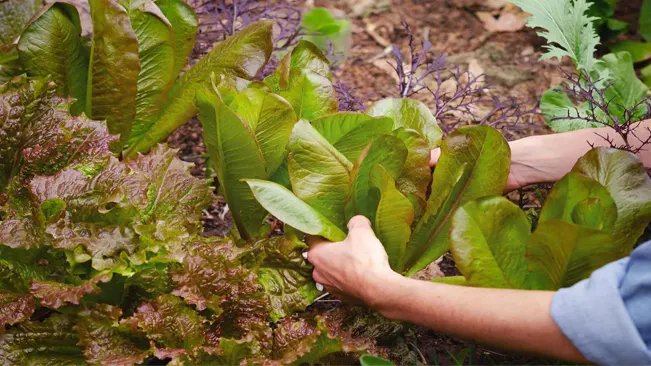
Location and Sunlight
Lettuce prefers cool temperatures and partial shade, especially in warmer climates. Aim for 3 to 4 hours of sunlight daily. In hotter regions, provide some afternoon shade to prevent the lettuce from bolting (going to seed prematurely).
Optimal Growing Conditions
- Cool Temperatures: Lettuce grows best in cool weather. Ideal temperatures are between 60°F to 70°F (15°C to 21°C). It can tolerate light frosts, making it suitable for early spring and late fall planting in many regions. When temperatures rise consistently above 75°F (24°C), lettuce can start to bolt, meaning it will rapidly go to seed, resulting in bitter-tasting leaves.
- Partial Shade: In cooler climates, lettuce can tolerate full sun, especially in the spring and fall. However, in warmer or hot climates, it’s crucial to provide partial shade. This can be achieved naturally by planting lettuce in a location that receives morning sun and afternoon shade, or by using shade cloth or other shading methods to protect the plants during the hottest part of the day.
Sunlight Exposure
- Duration: Lettuce typically requires about 3 to 4 hours of direct sunlight per day. This amount of sunlight is sufficient for the plants to photosynthesize and grow healthy leaves. Too much direct, intense sunlight, especially in warmer climates, can stress the plants, leading to bolting or wilting.
- Quality of Light: The quality of light matters as well. Morning sunlight tends to be less intense compared to the afternoon sun. Therefore, positioning your lettuce so that it gets morning sun and is shaded during the harsher afternoon hours can be beneficial.
Watering and Feeding
Lettuce needs consistent moisture. Water regularly to keep the soil evenly moist but not soggy. Use mulch to retain soil moisture and regulate temperature. Feed with a balanced, water-soluble fertilizer every two weeks for best results.
Watering
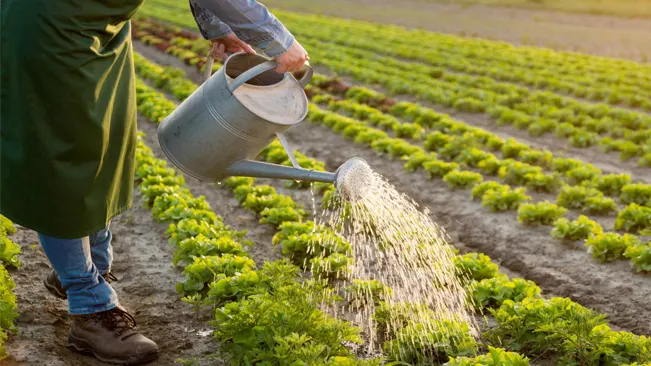
- Consistent Moisture is Key: Lettuce has shallow roots and requires consistent soil moisture to grow well. Inconsistent watering can lead to problems like bolting (premature flowering), bitter taste, or even plant death.
- Avoid Over-Watering: While lettuce needs regular watering, it’s important not to over-water as this can lead to root rot and other fungal diseases. The soil should feel moist at about an inch below the surface, not waterlogged.
- Frequency of Watering: This largely depends on your climate and weather conditions. In hot, dry weather, you might need to water once or even twice a day. In cooler, cloudy conditions, watering every two to three days may suffice.
- Best Time to Water: Early morning is the ideal time to water lettuce. This allows the leaves to dry off before the evening, reducing the risk of fungal diseases.
- Watering Methods: Use a gentle spray to water, either with a watering can with a rose attachment or a low-pressure hose. Drip irrigation is another excellent method, as it delivers water directly to the roots and keeps the leaves dry, reducing disease risk.
Feeding
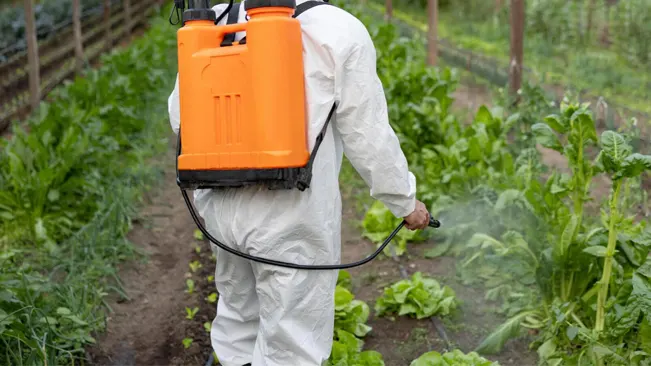
- Type of Fertilizer: A balanced, water-soluble fertilizer is ideal for lettuce. This means it should have equal or nearly equal parts of nitrogen, phosphorus, and potassium (e.g., a 10-10-10 NPK ratio).
- Frequency of Application: Fertilize your lettuce every two weeks. Regular feeding is important because frequent watering can leach nutrients out of the soil.
- Application Method: Apply the fertilizer according to the package instructions, usually by diluting it in water. It’s best to water the plant with plain water first if the soil is very dry, then apply the diluted fertilizer. This prevents root burn and ensures even distribution of nutrients.
- Organic Alternatives: If you prefer organic gardening, you can use compost or well-rotted manure as a fertilizer. Fish emulsion and seaweed extracts are also great organic options.
- Avoid Over-Fertilizing: Excess fertilizer can harm your lettuce plants. It can lead to excessive leaf growth at the expense of quality, or it can build up harmful salts in the soil.
Mulching
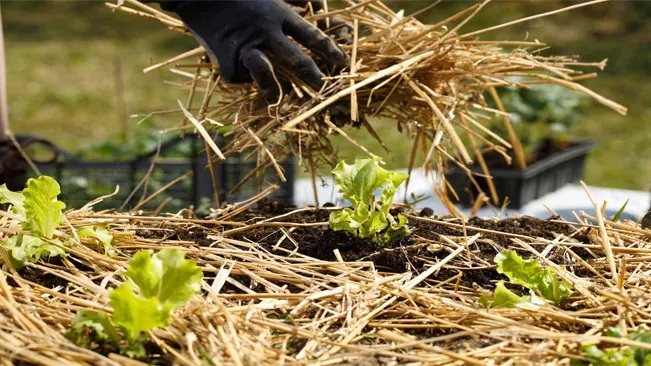
- Benefits of Mulch: Mulch helps retain soil moisture, suppresses weeds, and can regulate soil temperature. Organic mulches, like straw or bark chips, also gradually break down and add nutrients to the soil.
- How to Mulch: Apply a layer of mulch around the base of your lettuce plants. Ensure the mulch is not touching the plant stems to prevent rot.
Thinning and Spacing
Once seedlings are a few inches tall, thin them to allow about 6 to 8 inches of space between plants. This gives each plant enough room to grow and reduces competition for nutrients.
Thinning
Thinning refers to the process of removing some plants to ensure that the remaining plants have enough space to grow. This is especially important for crops like lettuce that are often sown densely.
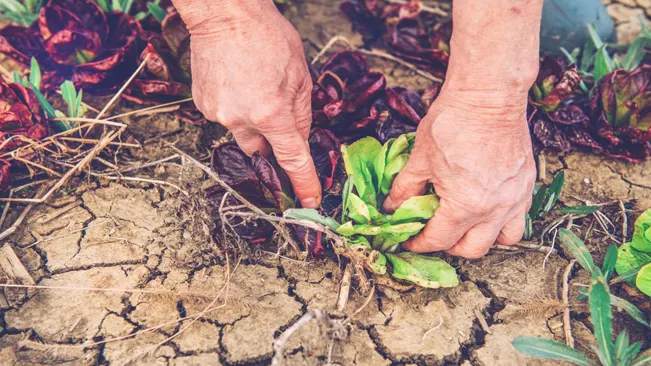
- Why Thin?: When seeds are sown, they are often placed closer together than the plants will need when they’re fully grown. If not thinned, the plants will compete for light, water, and nutrients, which can lead to stunted growth and poor yield.
- How to Thin: Once your lettuce seedlings have grown a few true leaves and are about an inch or so tall, you can start thinning. Gently pull out the smallest and weakest-looking seedlings, leaving the strongest to grow. If you’re worried about disturbing the roots of the plants you’re keeping, you can use scissors to snip the unwanted seedlings at the soil line.
Spacing
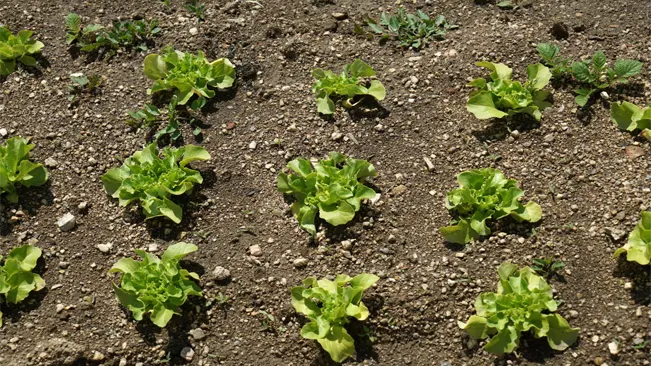
Proper spacing refers to the distance left between plants after thinning. It’s important for providing each plant enough room to grow to its full size.
Lettuce Spacing: For most lettuce varieties, a space of about 6 to 8 inches between plants is ideal. This spacing allows each plant enough room to spread out its leaves and roots.
Benefits
- Air Circulation: Proper spacing helps improve air circulation around each plant, which can reduce the risk of fungal diseases.
- Sunlight Access: Each plant receives adequate sunlight, which is essential for healthy growth and development.
- Nutrient Availability: Reduces competition for soil nutrients and water, leading to stronger, healthier plants.
- Harvesting Ease: Adequate space makes it easier to harvest your lettuce without damaging neighboring plants.
Pest and Disease Management
Be vigilant about pests like aphids and slugs. Use organic pest control methods such as neem oil or insecticidal soap. Rotate crops and practice good hygiene to prevent disease.
Pest Management
Aphids
These small, soft-bodied insects can be green, yellow, black, or brown. They suck the sap from the lettuce leaves, weakening the plant. Aphids also excrete a sticky substance called honeydew, which can lead to the growth of sooty mold.
Control: Use a strong jet of water to dislodge aphids from plants. Introducing beneficial insects like ladybugs or lacewings, which feed on aphids, is an effective organic control method. Neem oil, insecticidal soaps, or horticultural oils can also be used.
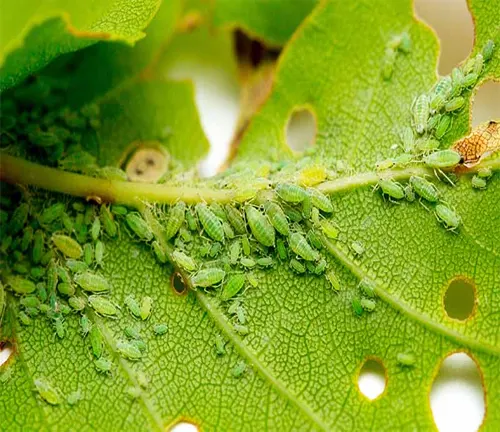
Slugs and Snails
These pests are especially problematic in damp conditions. They eat large, irregular holes in the leaves.
Control: Handpicking in the evening can be effective. You can also use barriers like crushed eggshells or diatomaceous earth around the plants. Iron phosphate baits are a safer alternative to more toxic slug and snail baits.

Caterpillars
Various types of caterpillars may feed on lettuce. They can do significant damage by eating the leaves.
Control: Handpicking caterpillars is often the simplest method. Biological controls include Bacillus thuringiensis (Bt), a natural bacterium that’s safe for humans but toxic to caterpillars.

Cutworms
These pests cut young plants at the soil line. They are active at night and can be difficult to spot.
Control: Use collars around the base of plants to protect them. Natural predators or Bt can also be used.
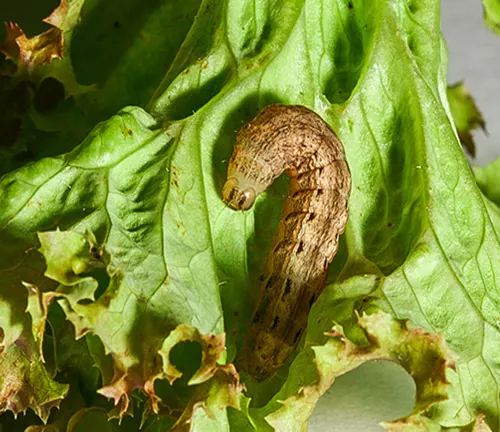
Disease Management
Powdery Mildew
This fungal disease appears as white, powdery spots on leaves. It thrives in both very humid and dry conditions.
Control: Improve air circulation around plants, and water in the morning to allow foliage to dry. Fungicides containing sulfur or potassium bicarbonate can help.
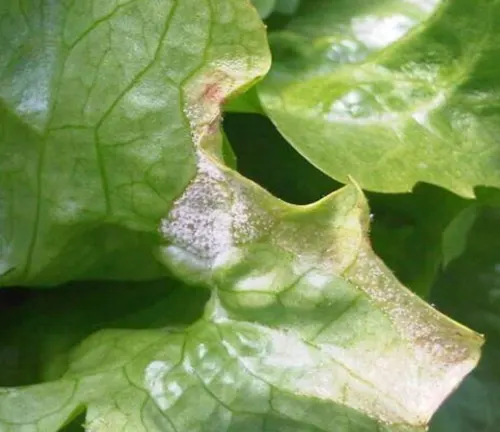
Downy Mildew
This appears as yellow spots on the upper leaf surface and a fluffy white growth underneath. It’s common in cool, wet weather.
Control: Plant resistant varieties if available, ensure good air circulation, and avoid overhead watering. Organic fungicides like copper-based sprays can be used as a preventive measure.

Leaf Spot Diseases
Including Septoria leaf spot and various bacterial leaf spots, these appear as discolored spots on the leaves.
Control: Remove and destroy affected leaves. Practice crop rotation and avoid overhead watering to minimize the spread.
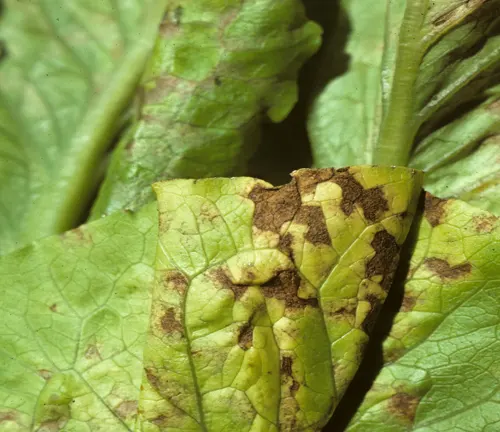
Harvesting Your Lettuce
Lettuce can be harvested as soon as it’s large enough to use. Cut the outer leaves, allowing the center to continue growing, or harvest the whole head. For continuous supply, plant a new batch of seeds every 2 to 3 weeks.
When to Harvest
- Leaf Lettuce
You can start harvesting leaf lettuce when the leaves are just a few inches tall. For a continuous harvest, pick only a few leaves from each plant at a time. - Head Lettuce (like Iceberg, Butterhead)
These varieties are typically harvested when they form a compact head. The head should be firm to the touch but not hard. - Romaine and Cos: Harvest when the leaves have formed a loose head and are about 6 to 8 inches long.
How to Harvest
Leaf-by-Leaf
This method, often used for leaf lettuce, involves picking the outer, larger leaves, and allowing the younger inner leaves to continue growing. This can prolong the harvest period for several weeks.
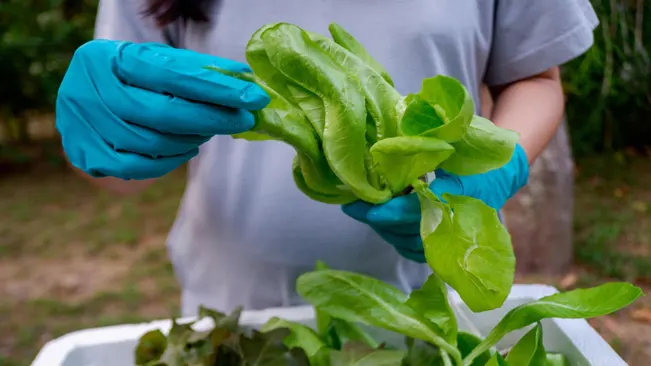
Cut-and-Come-Again
This approach is a variation of leaf-by-leaf harvesting. Cut the entire plant back to about 1 or 2 inches above the soil line. Many lettuce varieties will regrow and provide a second or even third harvest.
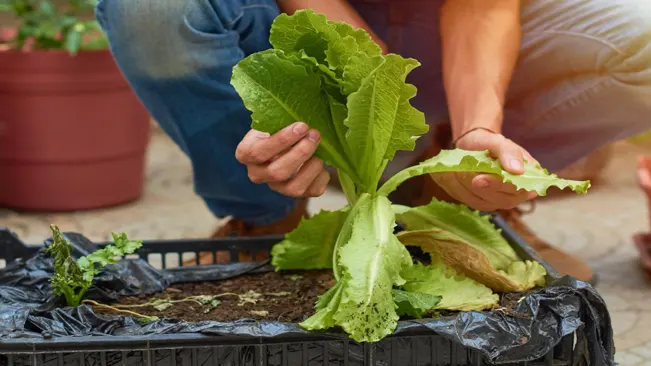
Harvesting the Whole Head
For head-forming lettuces, you usually harvest the entire plant. Cut the head at the base, just above the soil line, with a sharp knife.
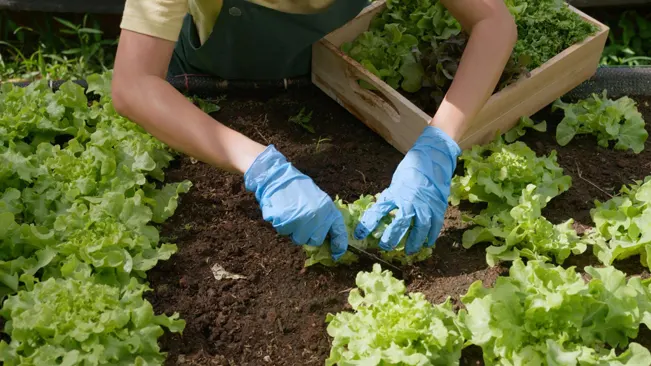
Best Time of Day to Harvest
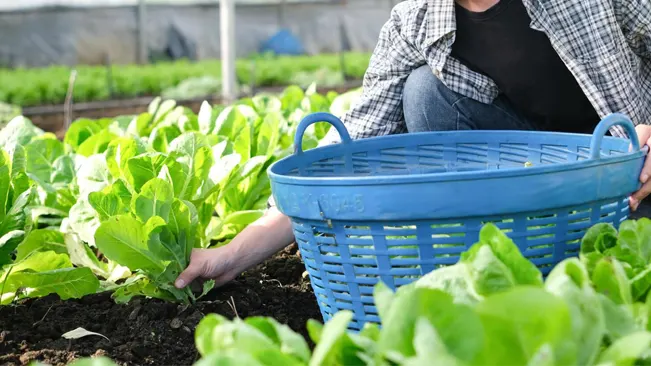
- Harvest lettuce early in the morning when the leaves are crisp, full of moisture, and have the highest nutrient content. If you can’t harvest in the morning, the next best time is in the late afternoon or early evening.
Tips for a Continuous Supply
- Succession Planting: To ensure a steady supply of lettuce, practice succession planting. Sow new seeds every 2 to 3 weeks. This method gives you a continuous harvest as different plants will be at different stages of growth.
- Different Maturity Rates: Plant a mix of varieties that have different maturity rates. This way, you’ll have some types that are ready to harvest earlier and others that take longer, extending your harvesting window.
Post-Harvest Care
- After harvesting, wash the lettuce leaves gently but thoroughly to remove dirt and small insects. It’s best to dry the leaves before storing to prevent them from becoming slimy in the refrigerator.
- Store lettuce in the crisper drawer of your refrigerator. Wrapping the leaves in a damp paper towel or placing them in a perforated plastic bag can help retain moisture and crispness.
Signs of Bolting
- Be aware of bolting, where the plant starts to flower and seed, a process usually triggered by hot weather. Once lettuce bolts, the leaves can become bitter. Harvest immediately if you notice your lettuce starting to bolt.
Conclusion
Growing lettuce is a delightful and straightforward endeavor that adds freshness and nutrition to your meals. With basic care and attention, you can enjoy a continual supply of this leafy green. So, put on your gardening gloves and start your journey to a thriving lettuce garden!
FAQs (Frequently Asked Questions)
- What is the best time of year to plant lettuce?
Lettuce prefers cooler temperatures, so the best time to plant is in early spring or late summer/early fall. In hotter climates, it’s advisable to grow lettuce in the shade or during cooler months. - How much sunlight does lettuce need?
Lettuce generally needs about 3-4 hours of sunlight per day. In hotter climates, it benefits from partial shade to prevent bolting (going to seed prematurely). - Can lettuce be grown in containers?
Yes, lettuce can be grown in containers. Make sure the container is at least 6-8 inches deep and has good drainage. Container gardening is ideal for varieties like leaf lettuce and butterhead. - How often should lettuce be watered?
Lettuce needs consistent moisture. Water it regularly to keep the soil evenly moist, but avoid overwatering as this can lead to root rot. - What kind of soil is best for growing lettuce?
Lettuce prefers loose, well-draining soil rich in organic matter. A pH between 6.0 and 7.0 is ideal. Adding compost or aged manure can help enrich the soil. - How do I prevent pests and diseases in my lettuce crop?
Keep your garden clean and free of debris. Use organic pest control methods like neem oil or insecticidal soap for pests like aphids and slugs. Crop rotation and proper spacing can help prevent many diseases. - When and how should lettuce be harvested?
Harvest leaf lettuce when the leaves are big enough to eat, typically 30-45 days after planting. For head lettuce, wait until the head feels firm but not hard. Cut the leaves or head with a sharp knife. - Can lettuce be regrown from scraps?
Yes, you can regrow lettuce from the base of a head. Place the base in a shallow dish of water, change the water daily, and after a few days, roots and new leaves will begin to appear. - How can I grow lettuce in hot weather?
Choose heat-tolerant varieties and provide partial shade during the hottest part of the day. Mulching and regular watering can also help keep the roots cool. - How do I know if my lettuce has bolted?
If your lettuce starts growing tall, forms seed stalks, and the leaves taste bitter, it has bolted. This is more common in high heat and long days of summer.

Kristine Moore
Forestry AuthorI'm Kristine Moore, a seasoned garden landscaping professional with over 30 years of experience. My extensive career has been dedicated to transforming outdoor spaces into stunning, sustainable landscapes. With a deep understanding of horticulture, design principles, and environmental stewardship, I have become a respected figure in the field, known for creating harmonious, visually appealing, and eco-friendly gardens. My commitment to excellence and continuous learning in landscaping trends and techniques has solidified my reputation as an expert in garden design and implementation.

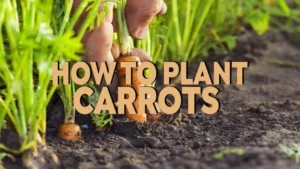
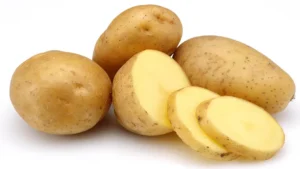





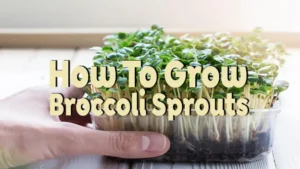

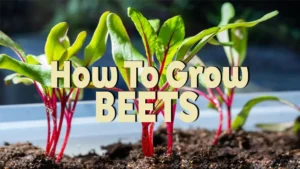


Leave your comment